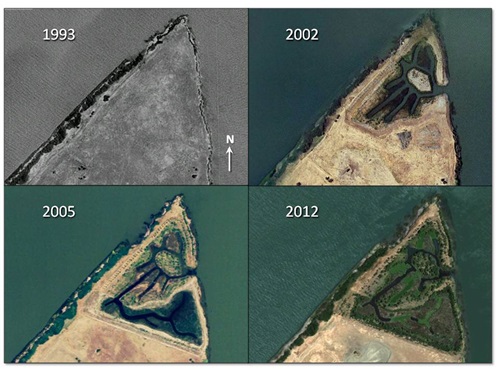Decker Island Habitat Development

From 1993 until 2012, the site was contoured and graded to create variable topography to support a diversity of habitats. Native trees, plants, and grasses were planted and the project site today provides extensive habitat for birds and small mammals.
The Decker Island Habitat Development/Levee Improvement Project provides 26 acres of fish and wildlife habitat at the northern tip of Decker Island and recreates historical river habitat. Decker Island was created between 1917 and 1937, as a result of the straightening of the Sacramento River, from sand dredged and deposited on the original marshland along Sherman Island.
The island is now approximately 20 feet above sea level. It is a 470-acre tract surrounded by the Sacramento River to the northwest and Horseshoe Bend to the east, south, and west. Until the start of this project in 1999, the island was covered with exotic weeds and grasses, providing little habitat value.
The project was built in two phases: 14 acres constructed in 2000 and 12 acres in 2004. Material was removed to create channels and to lower the surface elevations. The excavated material was exported off site for levee improvements. The site was contoured and graded to create variable topography to support a diversity of habitats. Native trees, plants, and grasses were planted and the project site today provides extensive habitat for birds and small mammals. The levee on Horseshoe Bend was breached to allow tidal flow into the island and the slough-like channels provide a water supply for the inland vegetation as well as shallow water fish habitat. Monitoring by the California Department of Fish and Wildlife (CDFW) has found both native and introduced fish species using the site. Large populations of aquatic vegetation such as egeria and water hyacinth have choked most of the channels and degraded the habitat for native fish. Nonetheless, the channels function very well providing water to the well-developed vegetation.
Habitat management includes detection and control of exotic plant species including pepperweed, star thistle, arundo, water hyacinth, and egeria. The Decker Island Habitat Development, coupled with the Sherman and Twitchell Island Levee Improvement Projects, provided a unique opportunity to integrate levee reinforcement with habitat improvement.
Is this an Active Project or Completed Project? Completed
Watershed: Sacramento – San Joaquin Delta
Why is the project needed? What are the project goals?
Goals:
- Excavate 600,000 cubic yards of material to use for levee improvements at Sherman and Twitchell islands
- Create channels from the removed material for shallow water habitat and for providing water to the interior of the project site for planted trees and vegetation
What is the status of the project?
Long term maintenance and monitoring
